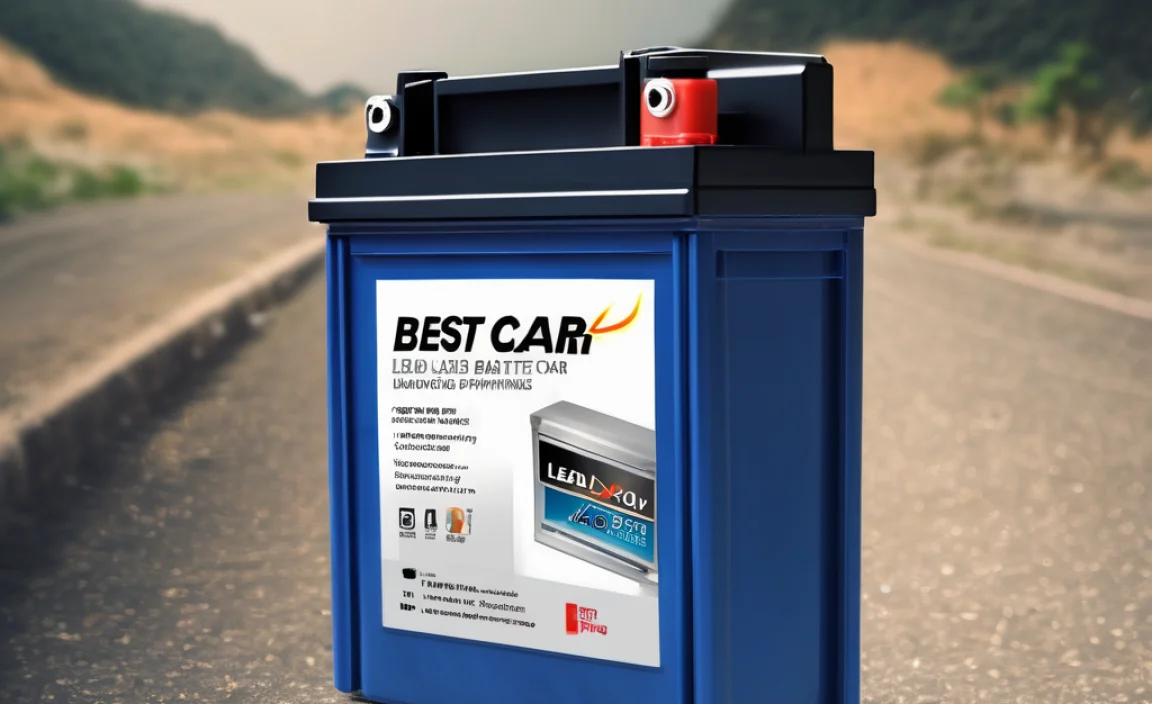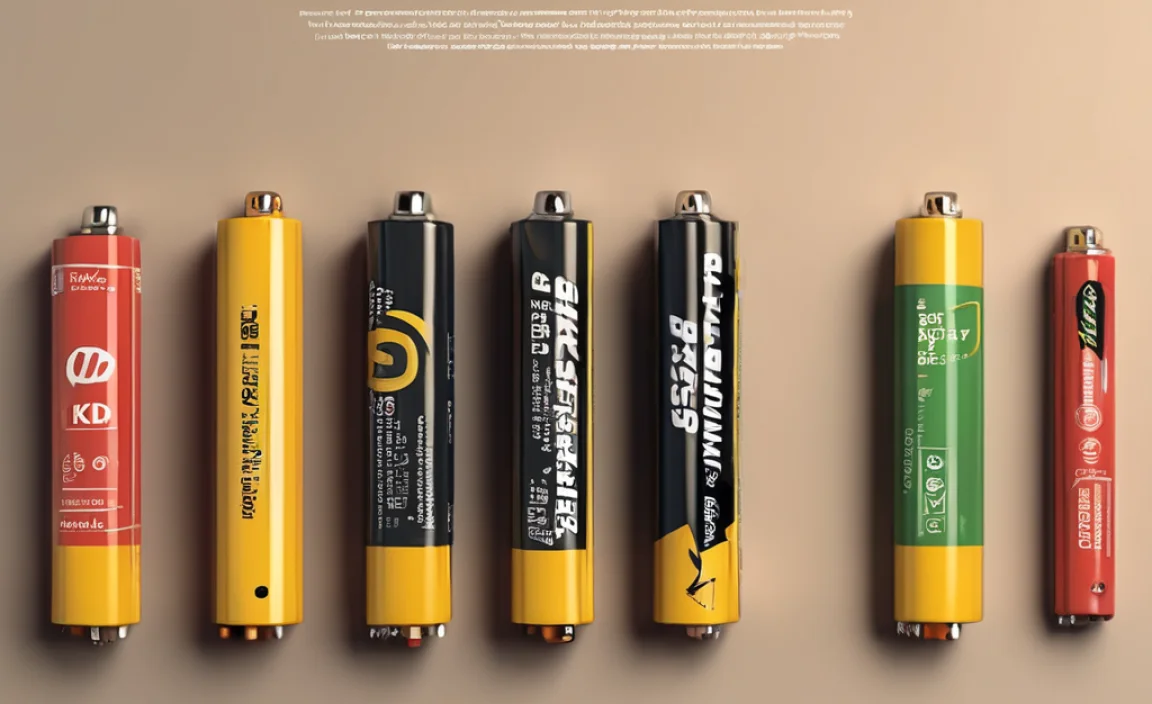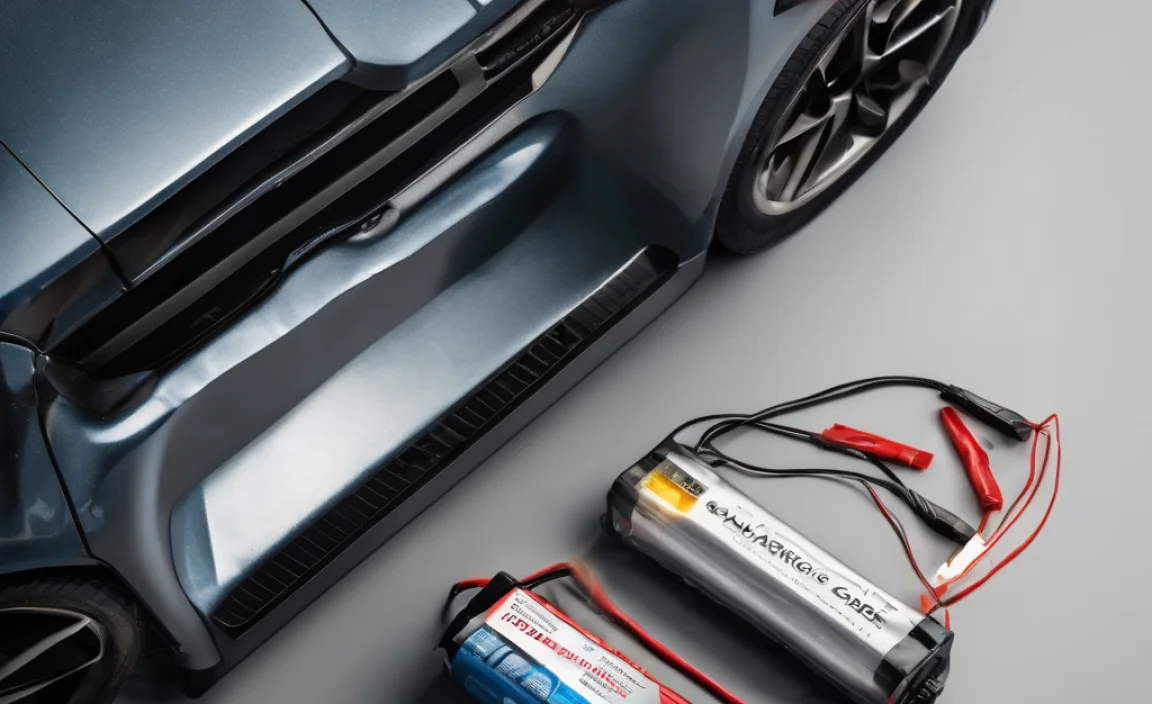Quick Summary: Finding grants for adaptive sports equipment can seem tough, but this guide breaks down how to find financial help from various organizations. We’ll show you where to look and what you need to apply, making it easier to get the gear that opens up new sporting possibilities.
Getting the right gear for adaptive sports can make all the difference in enjoying your favorite activities, but specialized equipment often comes with a big price tag. It’s frustrating when the cost stands between you and the thrill of the game, or the simple joy of participating. Many people face this challenge, wondering if there’s a way to make adaptive sports equipment more affordable. The good news is, there are resources out there to help! This guide is designed to walk you through the process of finding and applying for grants specifically for adaptive sports equipment. Think of me as your helper, making this process clear and manageable, so you can focus on getting back to your sport.
Discovering Funding: Where to Find Grants for Adaptive Sports Equipment
The world of adaptive sports is growing, and so is the support for it. Many foundations, non-profits, and even government programs want to see people of all abilities get active and involved. Finding the right grant often means knowing where to look and what kind of help is available. It’s like finding the right charger for your phone – you need to know what’s compatible. We’ll explore the main places where funding for adaptive sports gear can be found.
Non-Profit Organizations and Foundations
This is often the biggest source of funding. Many organizations are dedicated to helping people with disabilities participate in sports and recreation. They understand the need for specialized equipment and offer grants to help cover costs.
- Specific Disability Organizations: Some groups focus on particular disabilities, like spinal cord injuries, visual impairments, or amputations. They often have grant programs tailored to the equipment needs of their members.
- General Adaptive Sports Promoters: Other organizations are broader, supporting adaptive sports across many disability types. They might fund individual athletes, teams, or adaptive sports programs.
- Local vs. National: Don’t forget to look at local charities and foundations in your community. Sometimes, smaller, local groups have more accessible grants and can provide support closer to home. National organizations offer wider reach and often larger grants.
Government Programs
While less common for individual equipment purchases, government initiatives can sometimes provide funding indirectly, such as through rehabilitation services or state-level disability support programs. These might not be direct grants for a specific piece of equipment, but they can help cover broader costs related to adaptive sports participation.
- Rehabilitation Services: If you receive services from a vocational rehabilitation agency or a similar state program, inquire about funding for adaptive equipment that could aid in your recovery or participation in employment-related activities, which can include sports.
- Veterans Affairs (VA): For former military personnel, the VA offers significant support, which can include equipment for adaptive sports as part of rehabilitation and well-being programs.
Corporate Sponsorships and Community Programs
Some companies have corporate social responsibility programs that support disability initiatives, including adaptive sports. Local businesses might sponsor local adaptive sports clubs or events, which can sometimes lead to equipment grants.
- Local Businesses: Reach out to businesses in your area that have a community focus.
- Sporting Goods Companies: Some manufacturers of adaptive sports equipment may offer programs or discounts, or partner with non-profits that provide grants.
Navigating the Application Process: Your Step-by-Step Guide
Applying for a grant can feel like understanding a new charging port – it requires a bit of know-how. But don’t worry, we’ll break it down into simple steps. The key is to be prepared, thorough, and clear about your needs.
Step 1: Identify Your Needs and the Equipment
Before you start looking for money, you need to know exactly what you need. Be specific!
- What equipment? List the specific item(s) – e.g., a racing wheelchair, a handcycle, adaptive skiis, a sport-specific prosthetic, a specialized ball.
- Why this equipment? Explain how it will help you participate in adaptive sports. What specific sport or activity will it enable?
- Cost: Get a clear quote or estimate for the equipment. This is crucial for your application.
- Justification: If possible, get a recommendation from a coach, therapist, doctor, or adaptive sports program coordinator. This adds weight to your request.
Step 2: Research Potential Grant Sources
Use the categories we discussed earlier to start your search. Here are some actionable ways to find them:
- Online Search Terms: Use phrases like “grants for adaptive sports equipment,” “funding for disability sports,” “adaptive wheelchair grants,” or “sports equipment for disabled athletes grants.
- Adaptive Sports Organizations: Visit the websites of national adaptive sports bodies. They often have links to funding resources or direct grant programs. For example, the U.S. Adaptive Sports website is a good starting point for understanding opportunities in the U.S.
- Disability-Specific Groups: If your needs are related to a specific condition, search for organizations focused on that condition.
- Local Resources: Contact your local Parks and Recreation department, disability services office, or large hospitals with rehabilitation centers. They may know of local grant opportunities.
Step 3: Understand Eligibility and Requirements
Each grant has its own rules. Carefully read through them to make sure you qualify.
- Who can apply? Are there age limits, residency requirements, or specific disability criteria?
- What can the grant cover? Does it specifically fund equipment, or also travel, coaching, or adaptive sports programs?
- Application deadline: Mark these on your calendar!
- Required documents: This might include proof of disability, income statements, letters of recommendation, and quotes for equipment.
Step 4: Prepare Your Application
This is where you present your case. Take your time to make it strong.
- Follow Instructions Exactly: Just like connecting the right adapter, using the wrong plug won’t work. Adhere to formatting, length limits, and required sections.
- Tell Your Story: Clearly explain your passion for the sport and how the equipment will impact your life and participation. Make them see your vision.
- Be Honest and Accurate: Provide truthful information about your financial situation and needs.
- Proofread Everything: Errors can make an application look careless. Get a friend to read it over too.
Step 5: Submit and Follow Up
Once your application is complete and polished, submit it before the deadline. Some grantors allow or appreciate a follow-up call or email to confirm receipt or ask a brief clarifying question. Be polite and professional.
Key Organizations Offering Grants for Adaptive Sports Equipment
While the landscape of grants can shift, certain organizations are consistent supporters of adaptive sports. Knowing these names can give you a direct path to resources. Think of these as reliable power sources for your adaptive sports journey.
Challenged Athletes Foundation (CAF)
CAF is a major player in supporting athletes with physical challenges. They provide grants for equipment, training, and competition expenses. Their mission aligns perfectly with helping individuals achieve their athletic potential through adaptive sports.
- Focus: Grant funding for equipment, training, and competition.
- Who they help: Athletes of all ages with physical challenges.
- Website: You can find more information and application details on the Challenged Athletes Foundation website.
Team Gleason
Initially focused on supporting individuals with ALS, Team Gleason has a broader mission to improve life for those with neurodegenerative diseases. This can include providing adaptive technology and equipment that enhances quality of life and the ability to participate in activities, including sports.
- Focus: Improving life for individuals with ALS and technology for quality of life.
- Who they help: Individuals with ALS and related neurodegenerative diseases.
- Website: Explore their mission and programs at Team Gleason.
The Moose Charity
The Loyal Order of Moose, through its various charitable arms, often supports community needs, including recreation and adaptive sports programs. Funding can be available for equipment that helps individuals with disabilities access sports.
- Focus: Community support, including programs for children and adults with disabilities.
- Who they help: Varies by local lodge and specific programs.
- Website: Check with your local Moose Lodge or visit the Moose Charities website for general information.
Bumper Stickers & Beyond / Adaptive Sports & Recreation Fund
This is an example of a smaller, grassroots fund or organization that might be more localized but incredibly impactful. These often arise from community needs and can be very direct in their support. Searching for similar local initiatives is crucial.
- Focus: Providing adaptive sports equipment and opportunities.
- Who they help: Individuals within their service area.
- Tip: Look for local “Adaptive Sports Funds” or similar named initiatives in your state or region.
Paralympic Sports / National Governing Bodies (NGBs)
While NGBs primarily focus on elite competition, many also have programs or can direct you to resources for grassroots participation and equipment. For instance, organizations related to specific Paralympic sports often have pathways for new athletes and can sometimes assist with initial equipment needs.
- Focus: Developing and promoting specific sports and athletes.
- Who they help: Athletes aspiring to participate or compete in Paralympic sports.
- Example: Organizations like Disabled Sports USA (Disabled Sports USA) are excellent resources for a wide range of adaptive sports.
Essential Documents and Information for Your Grant Application
To make your grant applications strong, having certain documents and pieces of information ready is like having the right charging cable for your device – it ensures a smooth connection. The more prepared you are, the easier the application process will be.
1. Proof of Disability
Most grants require documentation of your disability. This could be:
- A letter from your doctor stating your diagnosis and how it impacts your mobility or participation in sports.
- A copy of your disability identification card.
- A letter from a relevant government agency (e.g., Social Security Administration).
2. Cost Estimates/Quotes
You need to show how much the equipment costs. This is non-negotiable for most equipment grants.
- Obtain official quotes directly from the supplier of the adaptive equipment.
- Ensure the quote clearly lists the item, model, specifications, and total cost, including any taxes or shipping.
- If possible, get multiple quotes if the grant requires it or if you’re comparing options.
3. Letters of Support or Recommendation
A letter from someone who knows your situation and your passion for sports can be very persuasive.
- From Coaches: A coach can speak to your dedication and potential.
- From Therapists/Doctors: They can attest to the benefits of the equipment for your health and well-being.
- From Community Leaders: Someone from an adaptive sports organization can highlight your commitment and the positive impact of your participation.
4. Personal Statement or Essay
This is your chance to tell your story and explain why you need the grant and what you plan to do with the equipment. Focus on:
- Your passion for the sport.
- How the specific equipment will enable or enhance your participation.
- Your goals in adaptive sports (recreational, competitive, etc.).
- The impact this equipment will have on your overall quality of life.
5. Financial Information (Sometimes Required)
Some grants are needs-based and may ask for information about your income or financial situation to determine eligibility or the amount of funding.
- Tax returns.
- Pay stubs.
- A statement of your financial need.
Understanding Common Grant Terms
When you look at grant applications, you’ll see certain terms. Understanding them is like knowing the difference between a USB-C and a Lightning port – it prevents confusion and ensures you connect properly.
| Term | Meaning in Simple Terms | Why It Matters |
|---|---|---|
| Grantor | The organization giving the money. | This is who you are applying to. Know their mission. |
| Grantee | The person or organization receiving the money. | This will be you! |
| Eligibility Criteria | The rules you must follow to even apply. | Crucial for knowing if you qualify. Don’t waste time on ineligible grants. |
| Funding Period | The timeframe when the grant money can be used. | Make sure your equipment purchase fits within this window. |
| Reporting Requirements | What you need to submit back to the grantor after receiving funds. | Often includes proof of purchase or updates on how the equipment is used. |
| In-Kind Support | Donated goods or services instead of cash. | Sometimes grants can be combined with donated time or equipment. |
| Matching Funds | Money you need to provide to get the grant money. | Some grants require you to contribute a portion of the cost. |
Tips for a Winning Grant Application
Just like ensuring your car battery has a strong connection for reliable power, a strong grant application needs careful attention to detail. Here are some tips to make yours stand out:
- Start Early: Don’t wait until the last minute. Researching and writing can take time.
- Personalize It: Tailor each application to the specific grantor. Generic applications are often overlooked.
- Be Clear and Concise: Avoid jargon. Use simple, direct language.
- Proofread Meticulously: Typos and grammatical errors can hurt your credibility. Have someone else read it.
- Tell a Compelling Story: Emotion and passion can make your application memorable, but back it up with facts.
- Follow All Instructions: This cannot be stressed enough. If they ask for a 500-word essay, don’t submit 1000 words.
- Be Realistic: Ask for what you need and what is reasonable for the grant’s purpose.
- Thank You Notes: A thank you after submission can be a nice touch, especially if there’s an opportunity to connect.
Frequently Asked Questions About Grants for Adaptive Sports Equipment
We’ve gathered some common questions people have when looking for funding for adaptive sports gear. Getting answers to these can make the whole process feel much smoother.
Q1: How much money can I expect from a grant?
This varies a lot! Some grants might cover the full cost of smaller items, while others might contribute a few hundred or a few thousand dollars towards larger, more expensive equipment like a specialized wheelchair or handcycle. It truly depends on the organization and the total cost of the equipment you need.
Q2: Can I apply for a grant if I’m a beginner in adaptive sports?
Absolutely! Many organizations are specifically looking to help individuals get involved in adaptive sports for the first time. Your passion and commitment are often more important than your experience level when seeking grants for equipment.
Q3: What if the equipment I need is very expensive?
For very expensive items, you might need to apply to multiple grant sources or look for programs that specifically fund high-cost equipment. You may also need to combine grant funding with personal fundraising efforts or community support campaigns. Don’t get discouraged if one grant doesn’t cover everything.
Q4: How long does it take to hear back about a grant application?
The timeline can range significantly, from a few weeks to several months. Grant organizations often have specific review periods. Your application confirmation should usually give you an estimate of when a decision can be expected.
Q5: Can I use grant money to buy used adaptive sports equipment?
This depends entirely on the specific grant guidelines. Some grants might allow it if it’s from a reputable seller or program, while others might require new equipment only. Always check the grant’



